Lorela Bregu
Advisor: Jae-Sung Chon
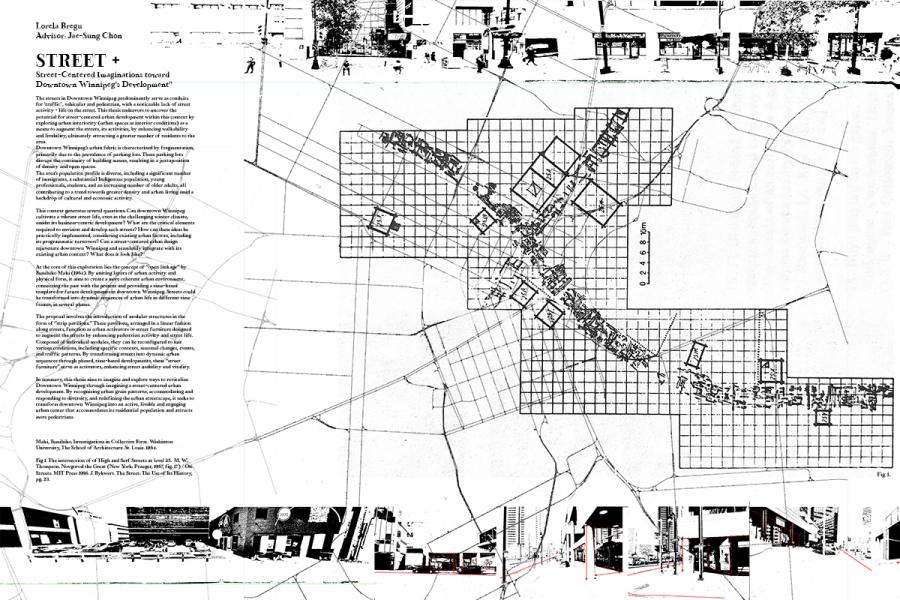

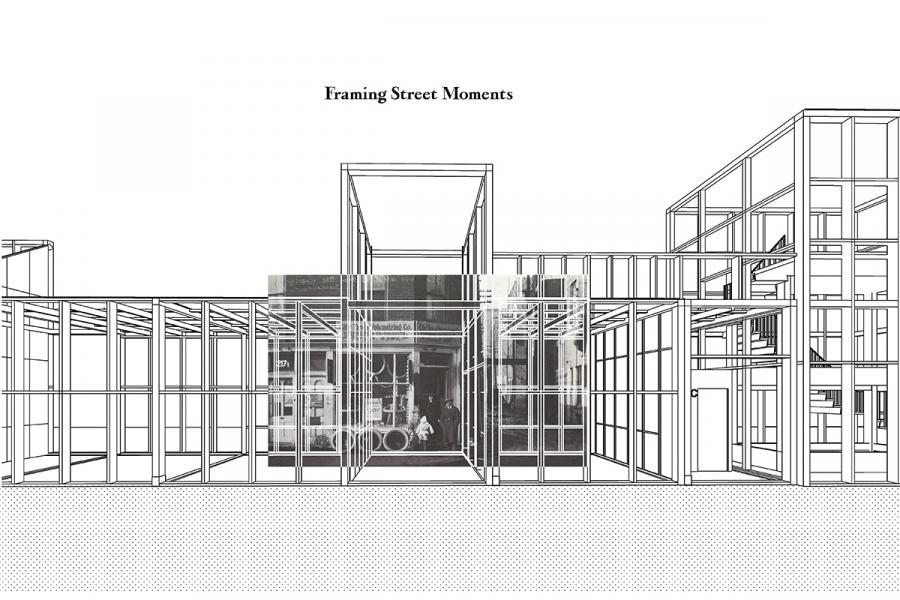
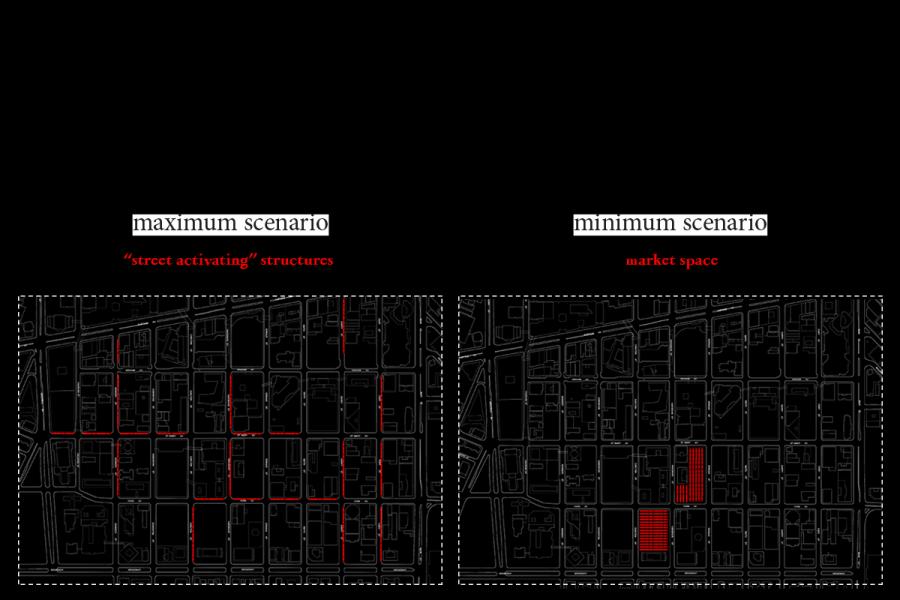
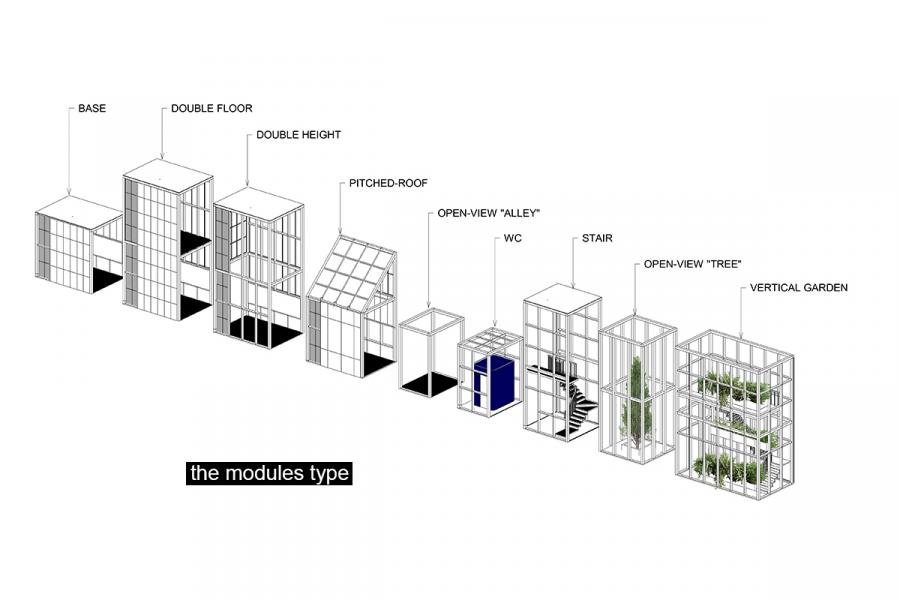
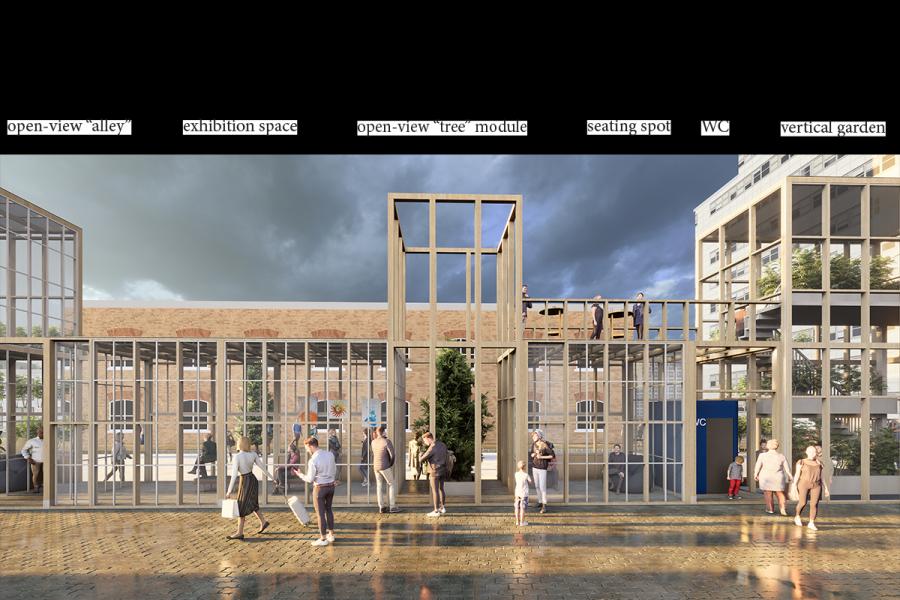
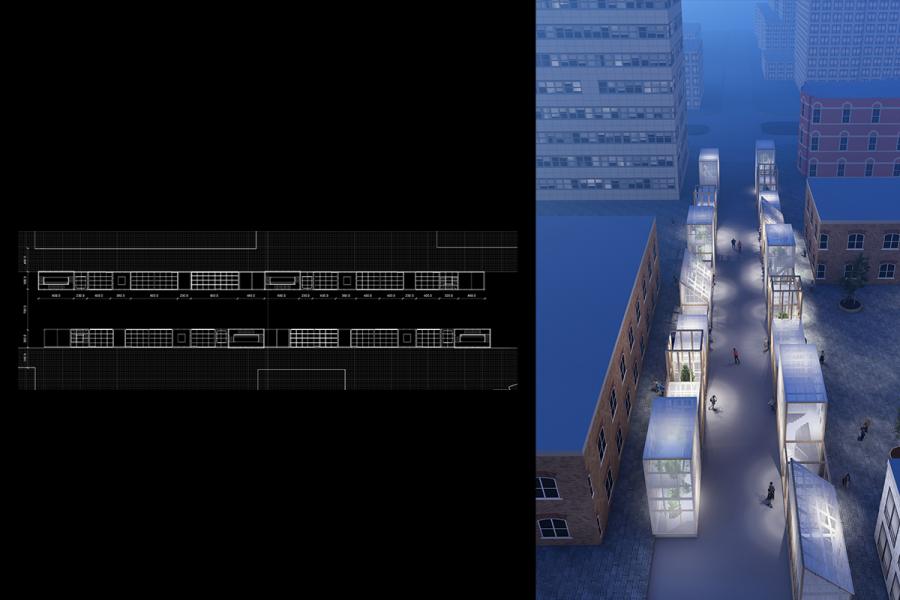
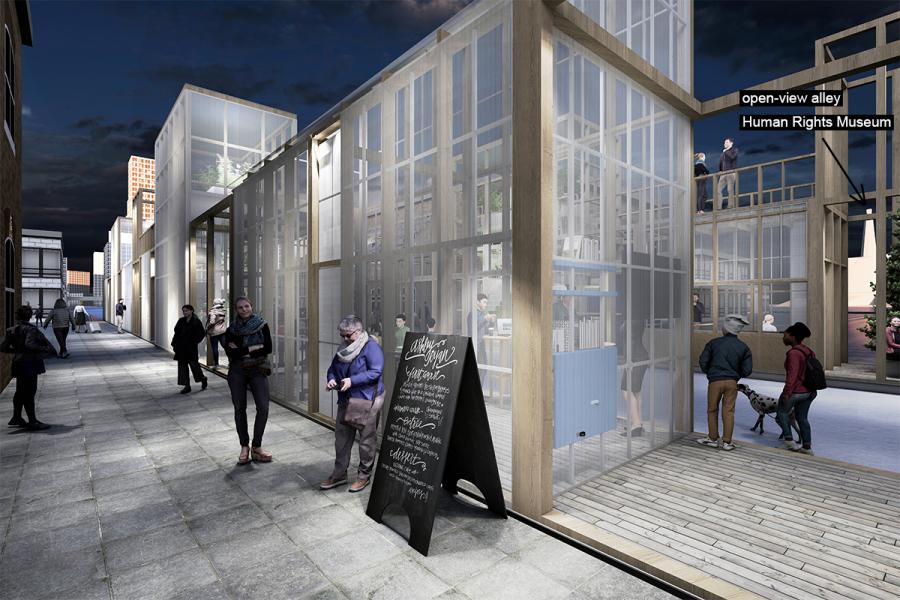
STREET +: Street-Centered Imaginations toward Downtown Winnipeg's Development
The streets in Downtown Winnipeg predominantly serve as conduits for ‘traffic’, vehicular and pedestrian, with a noticeable lack of street activity - life on the street. This thesis endeavors to uncover the potential for street-centered urban development within this context by exploring urban interiority (urban spaces as interior conditions) as a means to augment the streets, its activities, by enhancing walkability and livability, ultimately attracting a greater number of residents to the area.
Downtown Winnipeg’s urban fabric is characterized by fragmentation, primarily due to the prevalence of parking lots. These parking lots disrupt the continuity of building masses, resulting in a juxtaposition of density and open spaces.
The area’s population profile is diverse, including a significant number of immigrants, a substantial Indigenous population, young professionals, students, and an increasing number of older adults, all contributing to a trend towards greater density and urban living amid a backdrop of cultural and economic activity.
This context generates several questions: Can downtown Winnipeg cultivate a vibrant street life, even in the challenging winter climate, amidst its business-centric development? What are the critical elements required to envision and develop such streets? How can these ideas be practically implemented, considering existing urban factors, including its programmatic turnovers? Can a street-centered urban design rejuvenate downtown Winnipeg and seamlessly integrate with its existing urban context? What does it look like?
At the core of this exploration lies the concept of “open linkage” by Fumihiko Maki (1964). By uniting layers of urban activity and physical form, it aims to create a more coherent urban environment, connecting the past with the present and providing a time-based template for future developments in downtown Winnipeg. Streets could be transformed into dynamic sequences of urban life in different time frames, in several phases.
The proposal involves the introduction of modular structures in the form of “strip pavilions.” These pavilions, arranged in a linear fashion along streets, function as urban activators or street furniture designed to augment the streets by enhancing pedestrian activity and street life.
Composed of individual modules, they can be reconfigured to suit various conditions, including specific contexts, seasonal changes, events, and traffic patterns. By transforming streets into dynamic urban sequences through phased, time-based developments, these “street furniture” serve as activators, enhancing street usability and vitality.
In summary, this thesis aims to imagine and explore ways to revitalize Downtown Winnipeg through imagining a street-centered urban development. By recognizing urban grain patterns, accommodating and responding to diversity, and redefining the urban streetscape, it seeks to transform downtown Winnipeg into an active, livable and engaging urban center that accommodates its residential population and attracts more pedestrians.
Maki, F. (1964) Investigations in Collective Form. Washington University, The School of Architecture. St. Louis.
